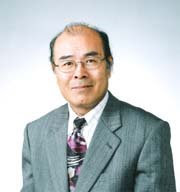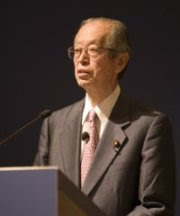Kobori Ryu suiei-jutsu is a koryu, or "ancient martial tradition." Unlike modern budo, such as judo, karate-do, or iaido, the old martial systems were often sogo bujutsu. A sogo bujutsu incorporates a number of martial disciplines that are linked by a set of unifying principles as espoused by the art's founder. While not all bushi, or warriors, studied every one of them, generally speaking there are 18 classical martial arts that often comprise sogo bujutsu. Although the exact arts that made up the bugei juhappan, or 18 martial arts, varied according to martial system, and sometimes according to historical period as well, suiei-jutsu is often described as being one of them.
Suiei-jutsu served various purposes, ranging from allowing the bushi to silently sneak up on an enemy, to floating for long periods, to fording strong rivers. Bushi needed to be able to swim while wearing armor, carrying flags, weapons, and banners; and they needed to be able to use a bow and arrow while almost submerged. Some ryu also featured grappling while in the water.
Fumi-ashi was a method of treading water from which many others methods emerged. To leap from the water into an enemy's boat, some suiei-jutsu systems practiced inatobi. And ashi garami allowed the bushi to entwine an opponent's leg while grappling. This would force the opponent to either give up or drown.
Sawai Sensei also has training in Hakko Ryu jujutsu. Hakko Ryu is one of the modern forms of Japanese jujutsu, although it's training format is traditional. However, the art form that has had the greatest impact on Sawai Sensei's life is Shin-shin-toitsu-do, a unique form of Japanese yoga and meditation.
Sawai Atsuhiro Sensei was born in 1939 in Japan. At the age of 18, he entered one of Kyoto's top universities. Like many college students, Sawai Sensei was filled with dreams, aspirations, and ambitions, only to fall seriously ill. Despite the efforts of many doctors, he could not find a cure for his sickness. Filled with despair, he stopped going to university classes.
Thinking that his illness might eventually result in his death, Sawai Sensei read books on Buddhism and Christianity to attempt to discover what will become of a human being after he or she dies. He thought constantly about the purpose of life, and he reached a conclusion that amounted to nihilism. In short, Sawai Sensei felt that there was no such purpose of life, in that we are born without the knowledge of where we came from, where we are going, and why we are here. He felt completely lost.
Sawai Sensei's aunt advised him to attend the lectures of Nakamura Tempu Sensei, the founder of the Shin-shin-toitsu-do system of Japanese yoga. Sawai Sensei listened to one of his lectures, and he was fortunate enough to meet him. He began to study with Nakamura Sensei at that time, and he felt awakened by the universal truths of mind and body unification that he taught. This took place in the spring of 1958.
In a short time, after beginning to practice Japanese yoga, Sawai Sensei's health completely recovered. He continued learning the philosophy of mind and body unification from Nakamura Sensei for 11 years until he passed away in 1968.
Sawai Sensei eventually became a full Lecturer for the Tempu-kai, which is the highest teaching credential issued by this group. He became a Councilor for Tempu-kai and Tempu-kai Branch Manager of Kyoto in 1998. In 1999, he became Director of Publishing for Tempu-kai and Editor of their magazine, Tempu. He also wrote regular articles for this publication.
Professionally, Sawai Sensei was a full professor of English at Kyoto Sangyo University for 23 years, and he taught at the university for 33 years. He entered semi-retirement and became Professor Emeritus of English in March 2004. He has also had the following books published:
Devils of Adolescence (poetry collection), 1967
The Mirror (poetry collection), 1973
The Collected Poems of Theodore Roethke (translation), 1984
British Colonization of New Zealand (collected research essays), 2003
Sawai Sensei's teacher, the founder of Japanese yoga, was also an experienced martial artist, with training in Kodokan judo and kendo. However, his greatest skill was in ancient Zuihen Ryu swordsmanship, the one martial art he continued to practice throughout his lifetime. Because Nakamura Sensei's form of Japanese yoga emphasized the development of ki ("life energy"), a concept valued by many in budo, and because of his emphasis on coordination of mind and body, numerous influential budo experts came to study with him as a means of improving in the martial arts. Although Nakamura Sensei did not teach budo, his Japanese yoga proved valuable to people studying budo and bujutsu, and as the result, a number of Japan's top martial artists flocked to his dojo. Owing to his own background in budo, he was able to teach them in a way they could relate to. And owing to his friendship with the founder of aikido, many aikido teachers studied Shin-shin-toitsu-do, including Tohei Koichi Sensei, the only person to receive a 10th dan from the founder of aikido.
Sawai Sensei is writing a series of articles for the SMAA Journal about mind and body unification principles that develop ki. He will relate these principles not only to daily life but to the practice of budo and bujutsu as well. Such information is exceedingly rare outside of Japan, as Nakamura Tempu Sensei's writings have never been translated into English, despite the fact that he had several best-selling books in Japan.




































